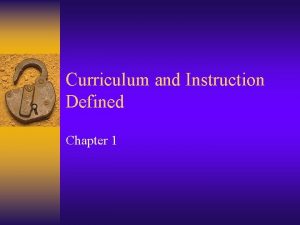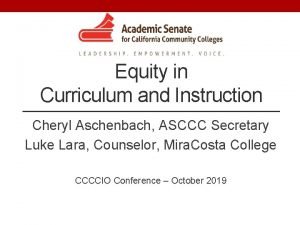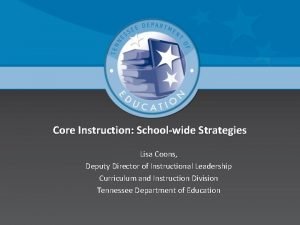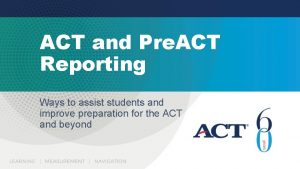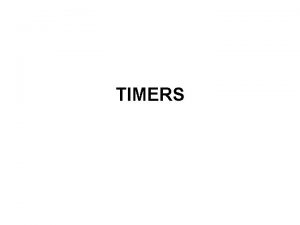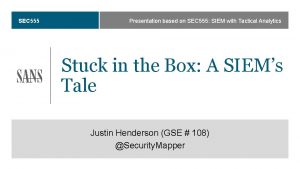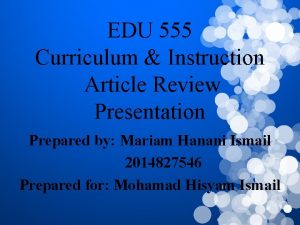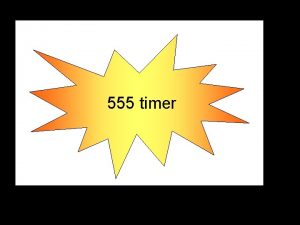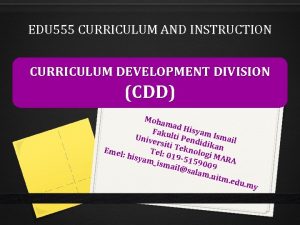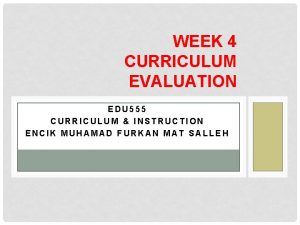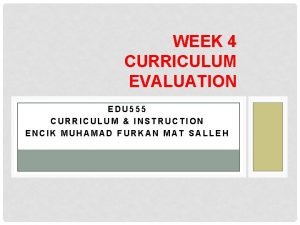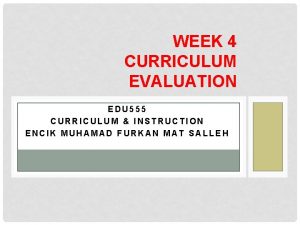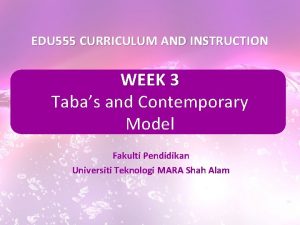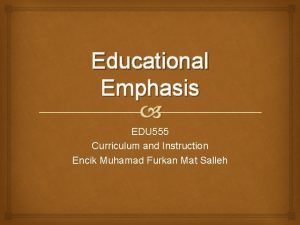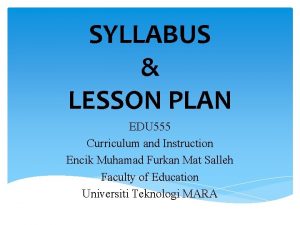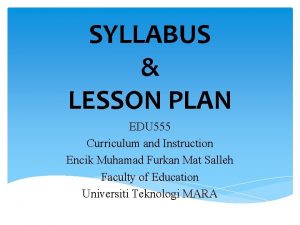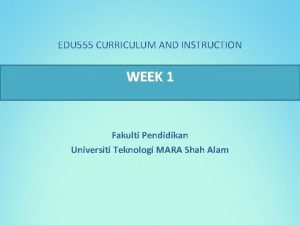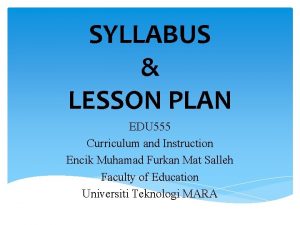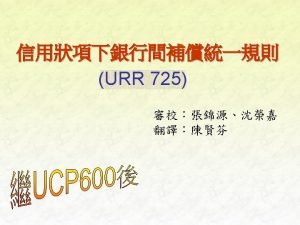Curriculum and Instruction EDU 555 Article Review Fatin















- Slides: 15

Curriculum and Instruction (EDU 555) -Article Review. Fatin Nabihah Binti Khalil 2013636296 ED 260 4 B En. Mohamad Hisyam Bin Ismail

ST 21 SKILLS FOR THE CENTURY : TEACHING HIGHER-ORDER THINKING By : Robyn Collin (29 august 2014) Curriculum and Leadership Journal

Higher-order Thinking i. “Transfer” Students can apply theories into practical ii. Critical thinking Reasonable ‘Artful Thinking’ iii. Problem-solving The skill of finding a solution for a problem Brookhart, S. (2010), How to Assess Higher Order Thinking Skills in Your Classroom , ASCD, http: //www. ascd. org/Publications/Books/Overview/How-to-Assess-Higher-Order-Thinking-Skills-in-Your-Classroom. aspx

How do we teach higher-order thinking? Psychomotor Affective Cognitive

BLOOM’s TAXONOMY


Changes of Bloom’s Taxonomy

Five major stages in teaching higherorder thinking skills Specifically teaching the language and concepts of higher-order thinking Planning classroom questioning and discussion time Explicitly teaching subject concepts Providing scaffolding Consciously teach to encourage higher order thinking

Comment(s) / Opinion(s) Specifically teaching the language and concepts of higher-order thinking Ø Use common language Ø Opinion : Briefly explained the necessary of higherorder thinking skills

Comment(s) / Opinion(s) Planning classroom questioning and discussion time Ø Must be in a good proportion Ø Opinions : Teachers should be expert in the subject area that they will teach Teachers should concern the abilities of students which are from the low-achievers and highachievers students

Comment(s) / Opinion(s) Explicitly teaching subject concepts Ø Help students in understanding the critical features Ø Opinion : Spending more time to help students

Comment(s) / Opinion(s) Providing scaffolding Ø Support students at the beginning of a lesson. Ø Not too much and not too little supporting Ø Opinion : I am agree with this way Slavin, R. (1995), A Model of Effective Instruction, The Educational Forum, 59

Comment(s) / Opinion(s) Consciously teach to encourage higher order thinking Ø Teach skills through real-world context Ø Relate the context in which students use new taught skills Ø Opinion : I am agree as it can help in low achievers students

Conclusion At the end of the last part of this article. . q The author stated that some researchers show the teaching of higher-order thinking skill has increased the motivation among students. q. The author was very assertive as he had pointed out some of the way in increasing the thinking skill among the people who live in 21 st century.

References 1. Anderson, L. , Krathwohl, D. , Airasian, P. et al (2001), A Taxonomy for Learning, Teaching, and Assessing: A revision of Bloom's Taxonomy of Educational Objectives, New York: Pearson, Allyn & Bacon 2. Brookhart, S. (2010), How to Assess Higher Order Thinking Skills in Your Classroom , ASCD, http: //www. ascd. org/Publications/Books/Overview/How-to-Assess -Higher-Order-Thinking-Skills-in-Your-Classroom. aspx 3. Bloom B. S. (1956), Taxonomy of Educational Objectives, Handbook I: The Cognitive Domain, New York: David Mc. Kay Co Inc 4. Collin, R. (2014). Skill for the 21 st Century: teaching higher-order thinking. Curriculum and Leadership Journal , Vol, 12. 5. Slavin, R. (1995), A Model of Effective Instruction, The Educational Forum, 59
 Dr fatin a. sahhar
Dr fatin a. sahhar Fatin organ
Fatin organ Fatin hamama
Fatin hamama Fatin abbas
Fatin abbas Models of curriculum-instruction relationship
Models of curriculum-instruction relationship Curriculum and instruction
Curriculum and instruction Vocabulary strategies
Vocabulary strategies Differentiated instruction vs individualized instruction
Differentiated instruction vs individualized instruction Direct instruction vs indirect instruction
Direct instruction vs indirect instruction Edu.sharif.edu
Edu.sharif.edu Home and away 555
Home and away 555 Act benchmark scores
Act benchmark scores Define curriculum
Define curriculum 555 watchdog timer
555 watchdog timer Speed & distance formula
Speed & distance formula Sec 555
Sec 555




